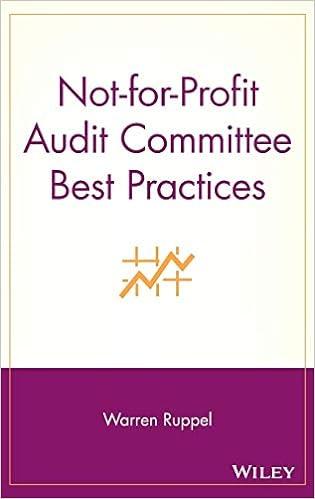Question
Instructions Craven Company, an accrual basis company, operates on a calendar year end and uses the current expected credit (CECL) method of aging of accounts
Instructions
Craven Company, an accrual basis company, operates on a calendar year end and uses the current expected credit (CECL) method of aging of accounts receivable to estimate credit losses. During a review of the adjusted trial balance, the controller questioned the dollar amounts reported for the allowance for credit losses and credit loss expense for the year ended December 31, Year 6. Concerned that some errors may exist, he asked the accounts receivable supervisor to investigate and provide supporting documents and calculations for the balance for both accounts. The credit terms are n/30. The percentages for accounts receivable deemed to be uncollectible for Year 6 are based on the previous year's aging schedule.
Includes several documents to review (included below questions): accounts receivable analysis, year 5 aging schedule, memo, and general ledger (selected).
Questions 
Accounts Receivable Analysis

Year 5 Aging Schedule

Memo

General Ledger (selected)

I really need an explanation of the last section, "Credit loss expense". I do not understand where to get the numbers to answer this question. Any help is super appreciated.
A. Complete the following schedule for allowance for credit losses. (Round your answers to the nearest whole percent.) B. Determine the correct December 31, Year 6 ending balance for the Allowance for credit losses and Credit loss expense. Below is the quarterly recap of Accounts Receivable prepared by the Accounts Receivable Supervisor for the year: Since the percentages deemed to be uncollectible for Year 6 are based on last year's aging schedule, the aocounts receivable department provide the following information from last year: The following memo was received from the accounts receivable technician regarding an account that was written off: To: Jessica Watkins, Controller From: Jacob Hansel, Accounts Receivable Technician Re: Write off of Employee Loan Date: December 15, Year 6 Per your instructions, we have written off the $1,500 Loan due from Employee - Ricardo Small as uncollectible. It is included in the fourth quarter write off of $26,200. The general ledger accounts for Year 6 credit loss expense, allowance for credit losses and loans to employees are presented below. A balance amount in parentheses indicates a credit balance. Note that the company makes write-offs and recovery entries on a quarterly basis but waits until year-end to make the adjusting entry for bad debt expense for the year. A. Complete the following schedule for allowance for credit losses. (Round your answers to the nearest whole percent.) B. Determine the correct December 31, Year 6 ending balance for the Allowance for credit losses and Credit loss expense. Below is the quarterly recap of Accounts Receivable prepared by the Accounts Receivable Supervisor for the year: Since the percentages deemed to be uncollectible for Year 6 are based on last year's aging schedule, the aocounts receivable department provide the following information from last year: The following memo was received from the accounts receivable technician regarding an account that was written off: To: Jessica Watkins, Controller From: Jacob Hansel, Accounts Receivable Technician Re: Write off of Employee Loan Date: December 15, Year 6 Per your instructions, we have written off the $1,500 Loan due from Employee - Ricardo Small as uncollectible. It is included in the fourth quarter write off of $26,200. The general ledger accounts for Year 6 credit loss expense, allowance for credit losses and loans to employees are presented below. A balance amount in parentheses indicates a credit balance. Note that the company makes write-offs and recovery entries on a quarterly basis but waits until year-end to make the adjusting entry for bad debt expense for the yearStep by Step Solution
There are 3 Steps involved in it
Step: 1

Get Instant Access to Expert-Tailored Solutions
See step-by-step solutions with expert insights and AI powered tools for academic success
Step: 2

Step: 3

Ace Your Homework with AI
Get the answers you need in no time with our AI-driven, step-by-step assistance
Get Started


